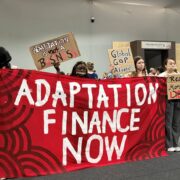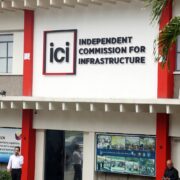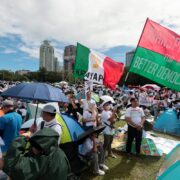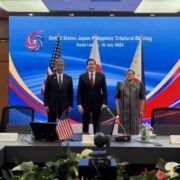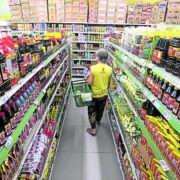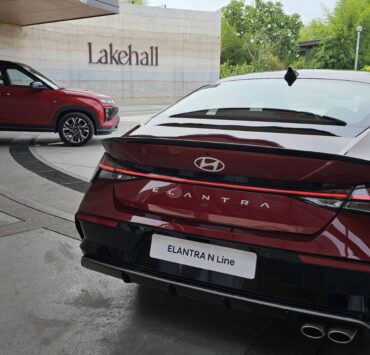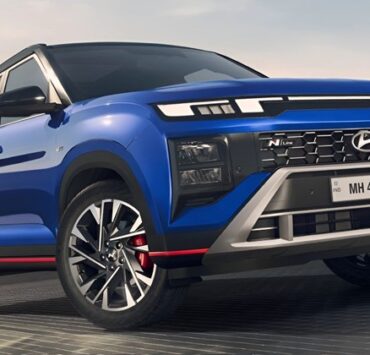Guadalupe Bridge closure: How will this impact Metro Manila living?

The Guadalupe Bridge is closing in October of this year for a long-overdue 17-month rehabilitation process. The original 1960s era inner bridge spans 114.44 meters from its abutments and has a total width of 18.7 meters per side. The additional two lane extensions on either were made in 1979. The latest numbers from the MMDA indicate that a total of 141,000 vehicles pass through the Guadalupe Bridge daily. MMDA Acting Chairman Atty. Don Artes says that reinforcement and maintenance works are critical to better prepare the Guadalupe Bridge for “the big one” citing its age, structural cracks already evident plus its proximity to the West Valley Fault.
All well and good, but what are the ramifications to us, the average Juan?
First and foremost, expect heavier traffic. Significantly far heavier traffic. Your 30-45 minutes drive will easily double if not triple. Following that is the very obvious loss in productivity. The Japan International Cooperation Agency (JICA) says that the Philippines loses P3.5 billion daily due to traffic and we should expect this to grow further. By how much? JICA forecasts losses to increase to P5.4 billion daily by 2030-2035 if the traffic situation in the Metro remains unattended. The monstrous traffic jam created by the Guadalupe Bridge closure will surely accelerate the rise in losses sooner. The most vulnerable to this? The small-to-medium scale enterprises who rely on daily cash flow to finance their businesses.
Next up, pollution will increase due to the greater traffic jams caused by the bridge closure. The air quality in Metro Manila will get worse. It is a possibility that we will see pulmonary diseases on the rise particularly for children, the elderly, the immuno-compromised and especially for the commuters, bicyclists and pedestrians.
Thirdly, petroleum-based fuel imports will increase and most likely pump fuel prices too due to increased demand caused by traffic. Our currency can potentially weaken further against the US Dollar.
Fourth, social / financial inequality will be even more apparent. Due to a new odd-even number coding scheme that will be applied specifically to EDSA on top of the existing number coding scheme, the haves will buy more cars to alleviate their own situation (most likely a hybrid or a low-end electric vehicle as these are exempted from the number coding scheme on EDSA) while the have-nots will continue to suffer in traffic, navigating away from EDSA through inner city streets that require a farther, longer and more time consuming route. Short-term, this might be good for the auto industry but the surge in growth is probably unsustainable beyond this period.
Fifth, overall quality of life will suffer. People will spend less quality time at home, be more stressed after getting home, and their income will be less or worth less either due to spending on sudden expenses (unplanned meals due to being stuck in traffic, increased fuel expenses, additional health / medical expenses) or the poor overall productivity of our economy plummets our currency further into oblivion. Metro Manila will be a godawful place to live in for the next 17 months. Assuming the bridge indeed finishes in 17 months and we can only hope the work is done properly too!
Lastly, rent prices in Makati, BGC, the Bay Area and around the NAIA complex will increase as many office workers coming from the north and east will face greater difficulty coming to work and will opt to rent, short term, closer to their workplace. This will separate families and further degrading quality of life.
What do we need to do? A hybrid or full work-from-home setup as well as home-schooling or study from home arrangement especially for grade-school and possibly junior high to minimize exposure to pollution, improved telco services to support work and study from home incentivized by the government, a focus on decentralizing Metro Manila in the long-term to spur growth in the provinces beside Metro Manila (Calabarzon, Bulacan and Pampanga) and flexible working hours for those applicable. Plus of course, rushing critical infra projects like the LRT7, the Southeast Metro Manila Expressway or Skyway Stage 4 which connects Quezon City to Taguig, the Skyway Stage 3 connection to the NLEX-SLEX Connector Road and the NSCR or North-South Commuter Railway that will connect Laguna to Bulacan.
This has always been a hallmark of our government: poor knee-jerk reactions to problems that have already been identified years prior. As a nation, we are all at fault, all guilty of pursuing the minimum passing standard, failing to consider growth, and to future proof our plans.
And if rumors are to be believed, San Miguel Corporation hasn’t even agreed to waive fees for Skyway Stage 3 during Guadalupe Bridge’s construction, stunned as they are by Secretary Vince Dizon’s pronouncement. That is true at least as of this writing. God please save us.



